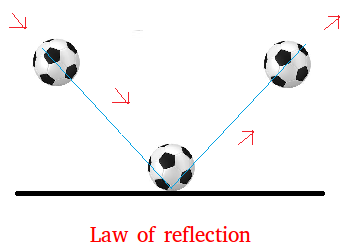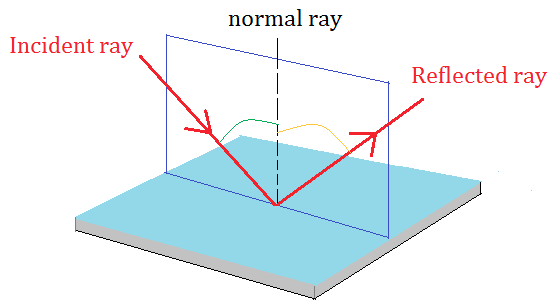Law of reflection
The law of reflection shows the relationship between the angle of incidence and the angle of reflection.
Keep reading and the meaning of
the angle of incidence and the angle of reflection will be clearly
understood.
We start with the behavior of a ball tossed to a floor because it helps to understand the behavior of light on a surface as well.
What happens when you toss a ball at an angle to the floor? Get a ball and do the experiment! The image below shows what will happen.

As you can see, the ball will bounce at the angle, but in a new direction. Something similar occurs when light waves hit a surface that can reflect light.
Light waves that will hit a surface are called incident waves and light waves that will be reflected from a surface are called reflected waves.
To make our drawing simple to understand, we usually use rays to represent the incident and reflected waves. Take a look at the image below.

The normal is an imaginary line that is perpendicular to the surface at a location where light strikes the surface.
The angle of incidence is shown in green. It is made with the normal line and the incident ray.
The angle of reflection is shown in gold. It is made with the normal line and the reflected ray.
Notice that the incident ray, the reflected ray, and the normal all lie in the same plane.
The law of reflection
According to the law of reflection, the angle of incidence is equal to the angle of reflection.
Let θi be the angle of incidence and θr the angle of reflection, then θi = θr